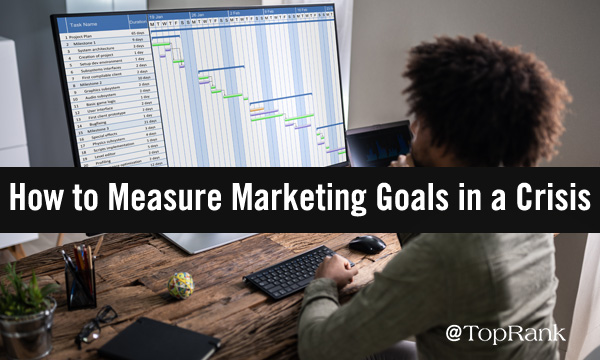Are you excited to start your own blog? Starting a blog is one of the best ways to make money, literally from anywhere. The internet has afforded us the freedom to be digital nomads and make an income from anywhere we choose to be in the world. The real truth is that anyone can start a blog in less than 30 minutes, by just buying hosting and installing WordPress. But here lies the actual challenge!
For starters, most people that start a blog may not fathom the amount of work that’s waiting for them. It’s a steep learning curve that will require you to grasp a tremendous amount of information both on the technical side of blogging as well as your creative approach. Today, things are much more sophisticated and not the same as how people made money from blogging years ago. Fortunately, with this sophistication, lies an even higher potential for making money. From choosing a blog niche to a blogging platform and looking at ways to monetize your blog, there are a couple of things you’ll need to understand.
How to Start a Blog
Decide on a Niche and Target Market
Your blog’s niche refers to the general topic of interest that you’ll be focusing your content on. These include topics like fashion, lifestyle, technology, food, travel, etc. For whichever blog niche that you are thinking about, come up with 5 to 10 keyword phrases that you could write about.

Making your blog stand out online and make money requires you to grab the attention of your audience. You obviously can’t do that if in the first place you aren’t aware whose attention you want to grab or what even interests them. Put aside buying a domain name and hosting, if you don’t know who you want to serve then you’ll end up starting a business that serves no one, and this won’t do you any good. Niche choosing with a target market is predominantly one of the crucial reasons why blogs fail.
Some important questions to ask when choosing a niche include;
- What are you passionate in?
- What do you currently do?
- What do other people say you are good at?
- Are there others doing the same thing?
- How strong is the competition?
- Do you have expertise in the niche?
- How will you monetize it?
- How much time and effort would it take to achieve your end goal or make money out of it?
Choose a Reliable Webhost
To get your blog online, you’ll need a blogging platform and a web hosting plan. For instance, if you’re just starting a new blog, you could use a WordPress blog hosted by Bluehost. WordPress is a user-friendly, free and powerful blogging software designed with usability and flexibility in mind.

Your hosting is an integral building block for your blog. It’s kind of like the display rack that’s used in a retail store to showcase products. If your hosting goes down, even temporarily, or it’s not as fast or doesn’t do what you want it to do, then you stand to lose money as well as your audience. It’s important to choose the best hosting service for your blog with security, reliability, speed, flexibility and cost in mind. Alternative blog hosting platforms to consider include, Geekstorage, Siteground, HostGator, Dreamhost and Lyrical host.
When buying hosting, make sure you buy your domain name separately so you can have the control needed to run your site without the interference of your webhost.
Pick a Domain Name
Domain name and web hosting are inseparable. Without a domain name, your blog won’t have an address. Securing your domain name further helps you focus and makes blogging feel all the more real. Take time to think through your domain name and especially aim to use a keyword that represents what your blog is about. Top qualities of a good domain usually are;
- Brandable
- Straightforward
- Easy to pronounce
- Easy to spell
- Not restrictive
Design Your Blog with a WordPress Theme
Design is so important when it comes to your blog. Even if you don’t care for it, your readers will shift their behavior based on the features of your blog layout. In the world of blogging, WordPress designs are called themes. You can always use free themes to design your blog but for extra variety, go for paid themes.
Now you are ready to take on the adventure. Create an about me page to introduce yourself to readers, and most importantly publish your first blog post!
Content is King
Content alone can make or break your blog. If your audience clicks over to your blog post and finds poor, low-quality content, then they won’t be reading, sharing, clicking through links and definitely won’t return to your site. Key to note here is that you have to write about things that your audience is actively searching for and not just the things you love. This you will know by getting to understand what your readers want by reading comments and knowing what they need. Solving a reader’s problem can eventually give tremendous returning traffic. As you consistently create engaging content, your tribe will continue to flock to you. A majority of your blog posts will be born out of your personal experiences, successes, failures, passions and new lessons.
Tip: When looking for clever blog post ideas, consider doing the following;
- Checking out forums like Reddit or Quora for fresh ideas
- Signing up for Google Trends to get top trending news about your niche
- Chatting with bloggers in your space and brainstorming fresh ideas
- Talking about various lessons you have learned
- Reflecting on common blogging mistakes in your niche and tactics that work

Having a simple editorial calendar that provides a roadmap to always knowing what you are writing next is a smart way to prepare for what to publish. A serious blogger needs to prioritize consistency by all means without compromise. Creating content only when it’s convenient can lead you down a dangerous road. Think about it. If you have scheduled a doctor’s appointment in your calendar or even a business meeting with a client, you are going to honor it. If not, you will reschedule for the next available time-slot. The same applies to editorial calendars. Its purpose is to keep you organized and help you reach your end goals more easily in small micro-steps.
Optimize Your Blog for Leads and Sales
How is your blog set up and optimized for search engines? Optimizing your blog for SEO should never be ignored. The main intent of a search engine is to provide value to its users by presenting them with top quality websites that are easy to navigate and with good content. While your blogging platform, especially if it’s WordPress is by default SEO friendly, there are still a number of things to check and change to make it better. These include;
- Blog structure
- URL structure
- Optimizing your category and tag pages
- Website Speed
- Mobile responsiveness
- Webmaster tools SEO
- ML Sitemap optimization
- Use of Schema Markups
As part of your SEO efforts, you should create engaging content for your audience and make this content more visible to search engines. To get your on-page SEO working, you’ll need to do things like;
- Optimizing titles and description
- Use videos, audio or images within your content
- Use proper headings and post formatting
- Apply the best internal linking practices for maximum SEO
You can customize and optimize your blog through the use of plugins that can maximize on your blog’s functionality. For instance, you can use plugins to add contact forms, forums or sliders.
Drive Traffic to Your Blog to Make Money
To make money from your blog, you’ll need organic traffic. It’s, however not all about driving traffic to your site but converting what traffic you get into subscribers, buyers and followers. Well, considering you have made it this far, now is time to promote your content heavily and bring in new readers. Below are some strategies on how to create successful blogs that get you in front of new readers.
Link Building – Link building is an extremely important aspect of getting more traffic from search engines. By having external links from other websites pointing to your website’s pages, you will get to rank higher in the SERPS. The most popular link building methods include;
- Guest posting on relevant and more authoritative sites
- Contacting other bloggers and introducing your website and content
- Linking to other websites from your content and contacting them to let them know. If they find your website useful, they may opt to do the same for you.
Use social media for your blog promotion – From Facebook to Twitter, Instagram, Pinterest, Reddit, LinkedIn, etc., there are a myriad of social media platforms to explore. However, don’t be pressured to promote your blog posts on every social media platform. The key insight here is to experiment yes, but determine the platforms that deliver the best returns/engagement. Pinterest has been mentioned by many bloggers as an effective platform to build a blog. You can create a cohesive profile with branded pin images, and people can get a sneak peek of who you are before going into your blog.
Guest blogging on relevant sites like Quora or LinkedIn – Guest blogging in other authoritative sites in your niche is a sure way to connect with an already established network. So, look for places where your audience is and make your presence felt there, whether it’s on other blogs, communities or social platforms.
Engage in forums and message boards for bloggers – Look for more targeted forums and online communities that relate to your niche on Facebook, LinkedIn or Reddit. Remember the critical thing here is to provide meaningful value before asking for anything in return, so engage and build relationships.
Use an email newsletter to grow your audience further – An email newsletter is a proven and effective way to keep readers engaged and excited about what you do. It’s also a good driver of growth and revenue for any blog. Therefore, begin by building your email list by simply adding a signup form within your posts and across critical pages of your site so that your audience can get updates whenever you post new blog posts or have a resource to share. Consider signing up to an email marketing platform like ConvertKit, Aweber, MailChimp, or InfusionSoft to grow your email list.
While at this, make sure that you are not just collecting emails without nurturing and adding value. Develop a small sequence of emails to keep your audience interest by sending them valuable information. Once they are settled in, send them an offer to a product. This is what marketers refer to as a sales funnel.
Further, other key and creative ways to promote your blog include;
- Interviewing people in your niche
- Networking with other relevant bloggers or mentioning their blogs
- Talking to people about what you’re doing
- Learning from other top bloggers, looking at what works for them and figuring how to use or apply the knowledge.
Blog Monetization
Ultimately, you are out to make money with your blogging. But make no mistake, while this is your eventual goal when getting started, monetization shouldn’t be your number one focus. Building relationships and forming a community around your blog while delivering value should be your priority and starting kicker.

Even still, it’s good to have an idea of how to make money while blogging. When you become well-versed on how to monetize your blog, you end up giving yourself the freedom to blog for the joy of it and the connections and networks come more organically. Let’s dive right in.
Freelancing
If you are looking to generate some income from your blog right away, freelancing is going to be the easiest option by far. To land your first freelancing gig, you’ll need to come up with a strong pitch, build out your key pages (About, Contact, Hire Me) and showcase your work through published posts. So, you may want to get started on creating those sample articles or other deliverables and host them on your blog. Once you get starting attention from brands, it’s important to know your worth. There are so many skills you could sell as a service, whether it’s in writing, design, social media management, photography, virtual assistance, SEO, paid advertising campaigns and more. What are your strengths? Do people struggle with it? Don’t hesitate to market your skills as people will always pay for the service if it means they won’t have to put in the work.
Join Affiliate Marketing Programs
Affiliate marketing is the most passive way to make money with a blog. You get to sell other people’s products (digital or physical) for a commission. With affiliate marketing, you are not only selling but helping people by including links to a product you love/use. Even as a new blogger, you can join affiliate marketing to gain access to top brands across different niches. As your blog grows, so does your potential for income. Here is how the process works;
- Determine the products you would want to promote
- Enroll in their affiliate marketing program to get a unique link and banners to use
- Add the links/banners in your blog
Whenever someone clicks on the links, they will be automatically directed to the provider’s website where they can make a purchase for you to get the agreed commission. There are many affiliate networks that connect bloggers with multiple companies that advertise via affiliate marketing. Among them include;
- Amazon Associates
- FlexOffers
- CJ
- ShareAsale
- ImpactRadius
If you can’t find your product on these networks, shoot the company an email and ask them which affiliate program you could find them.
Ask Your Audience
Another way to make money through blogging is to ask your audience. You can ask your audience to send some feedback at the end of your blog posts or send email blasts with a survey, using Google Forms, to gain valuable information on what your target audience needs. Your audience will most likely give you honest feedback that you can then use to develop a product or service to sell. E.g. a workout plan with targeted topics and routines they would be willing to pay for. Examples of digital products bloggers can create include; e-courses, online classes or workshops, Ebooks, premium content, photos, membership sites, audio or video, apps, plugins and themes, etc.
Sell advertising Space
Literally anyone can put an ad on their blog using Google Adsense. However, good money comes from selling ad spots on your website to corporations or what is commonly known as ad placement. If you build a high traffic blog, you can make a full-time income from this as advertisers will be willing to work with you to get exposure to your audience.
Find Relevant Products and Freebies to Promote/ Sponsored Posts
Here, companies will give a free product and hopefully monetary compensation, and you’ll be expected to highlight that product on your blog.
With so many income stream options in blogging, it’s essential to plan your future revenue-driving strategy with the right forms of monetization techniques. More importantly, note that monetizing a blog takes time and relies on you having some traffic.
And Finally
Start a Blog with the End in Mind
When you choose to invest in a business, you do it with an end in mind. Even when you go to college, you do it with a goal in mind. The same principle applies to blogging. You decide what you want from your blogging business and everything you do between now and your end goal must align with what you are aiming for. Most new bloggers make the mistake of trying random things in the hope they will find one that sticks, only to find themselves burnout before anything actually sticks.
Create and Understand Your Sales Funnel
Understanding your sales funnel is crucial as it helps you find the holes or places where your prospects fall off and never convert. Salesforce reports that a whopping 79% of marketing leads are never converted to sales mainly because 68% of businesses don’t have a clear sales funnel.
Take, for example, a visitor lands on your blog through a Google search or social link. He/she may check out your blog posts or browse your product listings. As a prospect, you may offer him/her a chance to sign up for your email list. If the visitor fills out the form, he/she can be considered as a lead that could potentially return to your site when you contact them with special offers, information about new blog posts, or other intriguing resources. At this point, you will have turned them from casual visitors to someone who is actively engaging with your brand, making it a lot easier to make money from them.
Key to note here is that your customers are on a journey that starts with learning about your business (awareness) and ends with them becoming clients or referring your blog or products to other people in their network.
Have Multiple Streams of Income
If your eventual goal is to make it big moneywise, then consider having multiple streams of income. This means that even if one strategy fails, then you have another to pick up the slack.
Be Adaptable
Successful bloggers continue to educate and update themselves as the world around them evolves. What’s popular and working now may not work in the future. Things change fast online. You, therefore, have to listen to your audience, track your statistics and figure out new ways to grow your blog even when it seems like everything is going wrong.
Conclusion
Starting a blog is incredibly easy. Creating a successful one that makes money requires a smarter approach that includes, hard work, dedication, SEO mastery and consistency. If you are a beginner and not sure how to start your blog, this article can be instrumental in pointing you in the right direction when it comes to creating a profitable blog.
The post How To Start A Blog And Make Money appeared first on HigherVisibility.
The post
https://www.highervisibility.com/blog/how-to-start-a-blog-and-make-money/ appeared first on
https://www.highervisibility.com
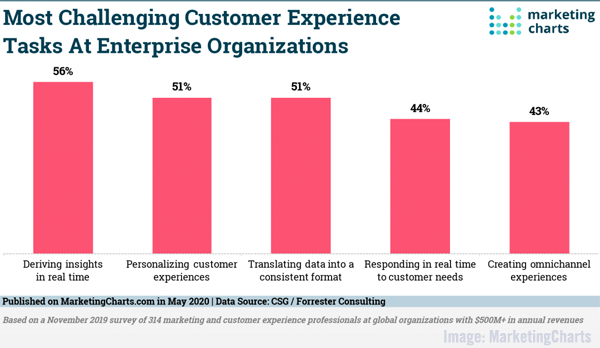
 What B2B Buyers Want From Tech Vendors Right Now 55 percent of B2B buyers say it's appropriate for marketing efforts to continue during these challenging times, and 53 percent are presently in the market for B2B products and services, with most of those having recent new purchasing interests, according to newly-released survey data. MarketingProfs Programmatic Ad Spend Down 9% Since Beginning of 2020, Driven by Travel and Auto Amidst an overall fall of 9 percent in April, ad spending for the technology vertical and the education and training segment were up 70 percent and 63 percent for the year, with streaming ad spend also up by some 18 percent, according to recently-released report data. Adweek Exclusive: New York Times phasing out all 3rd-party advertising data The New York Times has begun eliminating all third-party advertising targeting information, and by July the firm will instead use a fully-proprietary platform, the company recently announced. Axios Google’s digital-ad dominance is harming marketers and publishers, says new study Digital marketers and publishers have been hurt as a result of Google's online advertising dominance, according to a new study, with display ads the primary focus of the Omidyar Network and Public Knowledge report. AdAge Reddit Launches New, 12-Week Online Advertising School Program Social news and discussion platform Reddit has launched a three-month online community-driven advertising school program, led by director-level-or-above instructors covering 12 marketing topics, the firm recently announced. Social Media Today Polls Return to Messenger From Facebook. After a year’s absence Facebook Messenger polls have been brought back Digital marketers lamenting the elimination of Facebook's Messenger polls a year ago got good news recently, as the social media giant announced that it has brought the polling option back for group chats. Adweek
What B2B Buyers Want From Tech Vendors Right Now 55 percent of B2B buyers say it's appropriate for marketing efforts to continue during these challenging times, and 53 percent are presently in the market for B2B products and services, with most of those having recent new purchasing interests, according to newly-released survey data. MarketingProfs Programmatic Ad Spend Down 9% Since Beginning of 2020, Driven by Travel and Auto Amidst an overall fall of 9 percent in April, ad spending for the technology vertical and the education and training segment were up 70 percent and 63 percent for the year, with streaming ad spend also up by some 18 percent, according to recently-released report data. Adweek Exclusive: New York Times phasing out all 3rd-party advertising data The New York Times has begun eliminating all third-party advertising targeting information, and by July the firm will instead use a fully-proprietary platform, the company recently announced. Axios Google’s digital-ad dominance is harming marketers and publishers, says new study Digital marketers and publishers have been hurt as a result of Google's online advertising dominance, according to a new study, with display ads the primary focus of the Omidyar Network and Public Knowledge report. AdAge Reddit Launches New, 12-Week Online Advertising School Program Social news and discussion platform Reddit has launched a three-month online community-driven advertising school program, led by director-level-or-above instructors covering 12 marketing topics, the firm recently announced. Social Media Today Polls Return to Messenger From Facebook. After a year’s absence Facebook Messenger polls have been brought back Digital marketers lamenting the elimination of Facebook's Messenger polls a year ago got good news recently, as the social media giant announced that it has brought the polling option back for group chats. Adweek 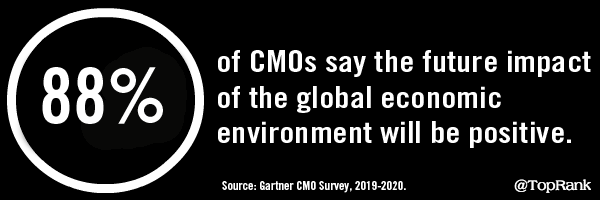 Pandemic hastens shift in ad buying to mobile, study says During an overall drop in ad spending, mobile ad spend has fared the best, as its 15 percent decrease was less than the 25 percent seen for desktop ad buying, according to recently-released study data. Mobile Marketer Facebook Launches New App Called 'CatchUp' to Facilitate Group Phone Chats Facebook recently released a tool to help bring online conversations to real-time phone communications, with the lanch of CatchUp, becomming Facebook’s sixth new app release in the past half year, the firm announced. Social Media Today Enterprise Companies Struggle with Customer Experience Tasks Real-time insights, personalization, and consistent data formatting are the top three customer experience (CX) challenges for enterprise firms, according to recently-released study data. MarketingCharts LinkedIn Publishes New Guide to Key Content Trends Amid COVID-19 LinkedIn (client) has released new information about trending content on the Microsoft-owned platform, with top trending hashtags and other information of interest to digital marketers, the firm announced. Social Media Today ON THE LIGHTER SIDE:
Pandemic hastens shift in ad buying to mobile, study says During an overall drop in ad spending, mobile ad spend has fared the best, as its 15 percent decrease was less than the 25 percent seen for desktop ad buying, according to recently-released study data. Mobile Marketer Facebook Launches New App Called 'CatchUp' to Facilitate Group Phone Chats Facebook recently released a tool to help bring online conversations to real-time phone communications, with the lanch of CatchUp, becomming Facebook’s sixth new app release in the past half year, the firm announced. Social Media Today Enterprise Companies Struggle with Customer Experience Tasks Real-time insights, personalization, and consistent data formatting are the top three customer experience (CX) challenges for enterprise firms, according to recently-released study data. MarketingCharts LinkedIn Publishes New Guide to Key Content Trends Amid COVID-19 LinkedIn (client) has released new information about trending content on the Microsoft-owned platform, with top trending hashtags and other information of interest to digital marketers, the firm announced. Social Media Today ON THE LIGHTER SIDE: 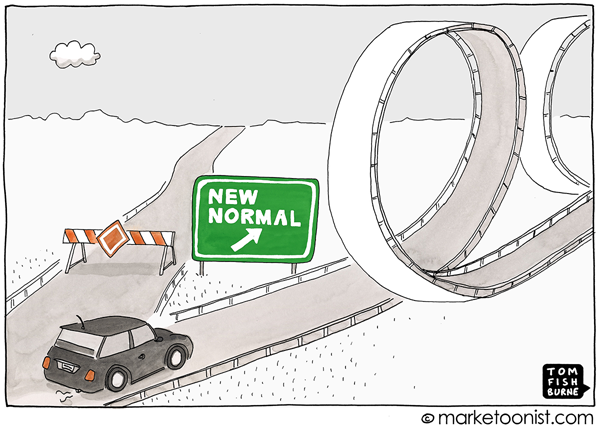 A lighthearted look at “the new normal” by Marketoonist Tom Fishburne — Marketoonist Whoooaaa Duuuuude: Why We Stretch Words in Tweets and Texts — Wired TOPRANK MARKETING & CLIENTS IN THE NEWS:
A lighthearted look at “the new normal” by Marketoonist Tom Fishburne — Marketoonist Whoooaaa Duuuuude: Why We Stretch Words in Tweets and Texts — Wired TOPRANK MARKETING & CLIENTS IN THE NEWS:

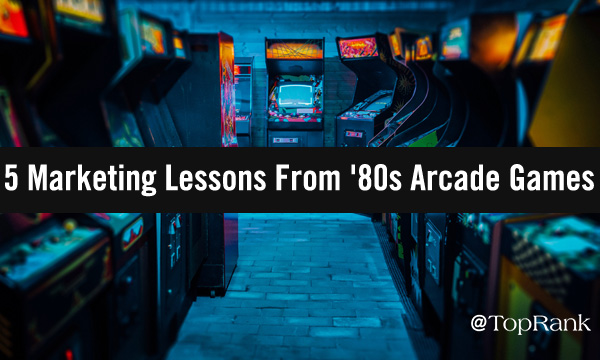
 Photo by Author[/caption] Williams Electronics’ Defender is my all-time favorite stand-up video arcade game, an insidiously difficult side-scrolling spaceship-protecting-the-world shooting match juggernaut from 1981 programmed by early video game legend Eugene Jarvis. I played Defender so much that I eventually won a local video game competition, and can still almost feel where I had callouses on my hands from hour upon hour of game-play long ago. Defender teaches marketers the importance of
Photo by Author[/caption] Williams Electronics’ Defender is my all-time favorite stand-up video arcade game, an insidiously difficult side-scrolling spaceship-protecting-the-world shooting match juggernaut from 1981 programmed by early video game legend Eugene Jarvis. I played Defender so much that I eventually won a local video game competition, and can still almost feel where I had callouses on my hands from hour upon hour of game-play long ago. Defender teaches marketers the importance of 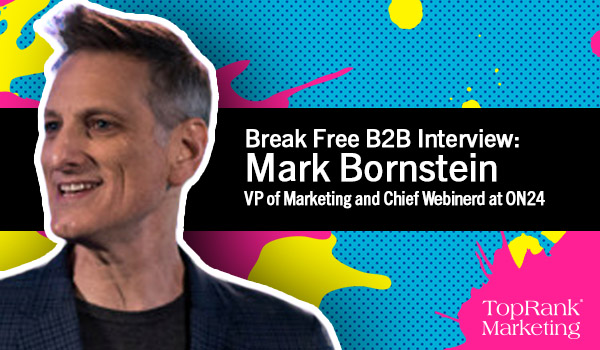





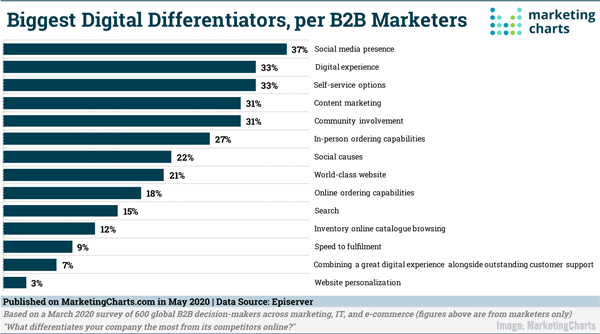
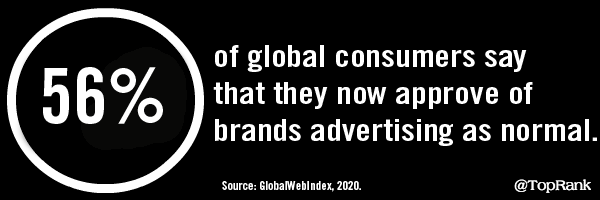 Facebook's 'Messenger Rooms' Multi-Participant Video Chat Option is Now Available to All Facebook has launched its Messenger Rooms video messaging feature with a global release that includes up to 50 video participants and the ability to drop in via Facebook’s feed, the firm recently announced.
Facebook's 'Messenger Rooms' Multi-Participant Video Chat Option is Now Available to All Facebook has launched its Messenger Rooms video messaging feature with a global release that includes up to 50 video participants and the ability to drop in via Facebook’s feed, the firm recently announced. 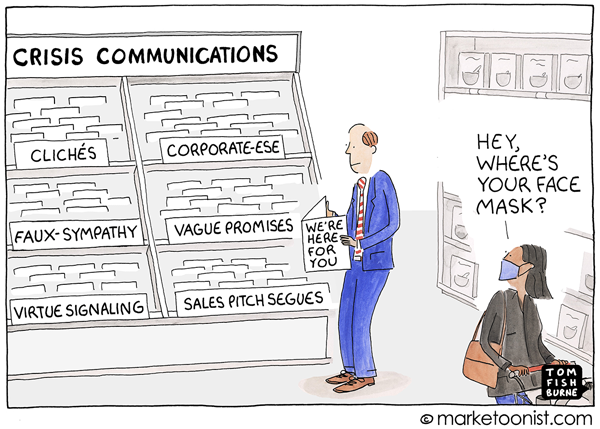 A lighthearted look at “communicating in a crisis” by Marketoonist Tom Fishburne —
A lighthearted look at “communicating in a crisis” by Marketoonist Tom Fishburne — 







